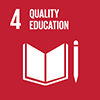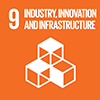June 2022 - You are accessing an old version of our website. The SDGs Voluntary Commitments have been migrated here: https://sdgs.un.org/partnerships
You will be redirected to the new Partnership Platform in 10 seconds.
June 2022 - You are accessing an old version of our website. The SDGs Voluntary Commitments have been migrated here: https://sdgs.un.org/partnerships
You will be redirected to the new Partnership Platform in 10 seconds.
The objective of the practice is to bring to the UN Statistical Commission the Degree of Urbanisation method for adoption in 2020. At present, the national definition to identify urban areas are substantially heterogeneous (and rely on administrative, population size or population density criteria, or a combination of the three) making comparisons across countries and data collection incompatible. The Definition of Cities, urban and rural areas uses two standard gridded databases, produced and updated by the JRC (Global Human Settlement Layer).
The global definition of urban areas is based on the Degree of Urbanzation (Dijkstra and Poleman 2014) and it uses Global Human Settlement Built-up area layer and the Global Human Settlement Population grid to calculate generate classes of settlements types that when grouped define urban areas and rural areas. The global definition of cities is required for calculation of indicators related to six Sustainable Development Goals. These include:
1 SDG 1.1.1 Proportion of population below the international poverty line
2 SDG 2.4.1 Proportion of agricultural area under productive and sustainable agriculture
3 SDG 3.3.1 Number of HIV infections per 1000 uninfected population
4 SDG 4.5.1 Parity indices for all education indicators
5 SDG 9.1.1 Proportion of the rural population that live within 2 km of an all-season road
6 SDG 11.3.1 Ratio of land consumption rate to population growth rate
In addition a number of SDG 11 indicators are sensitive to the city boundaries these include
11.2.1 Proportion of population that has convenient access to public transport
11.6.2 Annual mean levels of fine particulate matter (e.g. PM2.5 and MP10) in cities
11.7.1 Average share of the built-up area of cities that is open space for public use for all.
Most importantly the suite of products produced by JRC are key to fill data gaps in data poor territories and to make available a baseline for comparison to countries whit the capacity to produce data.
The efforts to promote the Degree of Urbanisation are led by the EC and involves a partnership of other institutions including OECD, the World Bank, UN-HABITAT and FAO. The JRC is currently organising training events in the 5 ECOSOC regions to train statistical Offices and line Ministries ahead of the UN Statistical Commission session in 2020. The datasets and the tool to calculate the indicators related to six SDG’s are global, open and free. The datasets may be used by international organization and donors to have an independent assessments of SDGs.
The project that provides the datasets is an institutional European Commission project. The datasets are used for applications in reporting on International Frameworks other than SDG’s including UN Habitat Urban Agenda, Sendai Framework for Disaster Risk Reduction and Paris Agreement on Climate Change.
The project aims to continue to produce the datasets for use in future reporting.
The Geo Human Planet Initiative is the reference community of practice.
The activity is part of an Administrative Arrangement between JRC Dir. E.1 and DG-REGIO. The JRC supports the policy DG with data production, integration and analytics to uptake the global commitment for a harmonised definition of cities and settlements due for decision at the UN Statistical Commission in 2020.
The dataset is available for any institutions to use. It may be improved with the future finer resolution satellite imagery. It may require validation, that possibly through the computation from national governments.
The innovation that produces the datasets and methodology are part of institutional innovation activities carried out at the Joint Research Centre. However, the work is part of a larger network of institutions centred on the Geo Human Planet Initiative is the reference community of practice.
The new technology used for generating the Global Human Settlement Layer (GHSL) products allows producing global, yet locally consistent data for local action at the city level. The uptake of the data by decision makers for local, national or global reporting requires a regular update of the information. It is envisioned that future data for generating indicator will use the resources provided by the EU’s Copernicus space programme.
The datasets will continue to be generated at regular intervals of time, with same characteristics in order to assure comparability of the datum in time and space.
Global population density and built-up areas are two baseline datasets that can be potentially used to generate the city boundary outline to be used in at least six Sustainable Development Goals Indicators.
This work provides a first standardized way to measure cities extent, urban and rural areas.
The method advantage is that the definition was generated from high level consultation at international level, it is supported by two data layers that are consistent in space and type, that are available for a 40 year time span and will continue to be produced in the future.
GHSL website https://ghsl.jrc.ec.europa.eu/
Monitoring 25 years of Land Use Efficiency in 10,000 Urban Centers: perspectives from the Global Human Settlements Layer http://ic-sd.org/wp-content/uploads/sites/4/2018/11/Michele-Melchiorri.pdf
Atlas of the Human Planet 2018 https://ec.europa.eu/jrc/en/publication/eur-scientific-and-technical-research-reports/atlas-human-planet-2018






 Start: 01 January, 2016
Start: 01 January, 2016 Completion: 31 December, 2020
Completion: 31 December, 2020